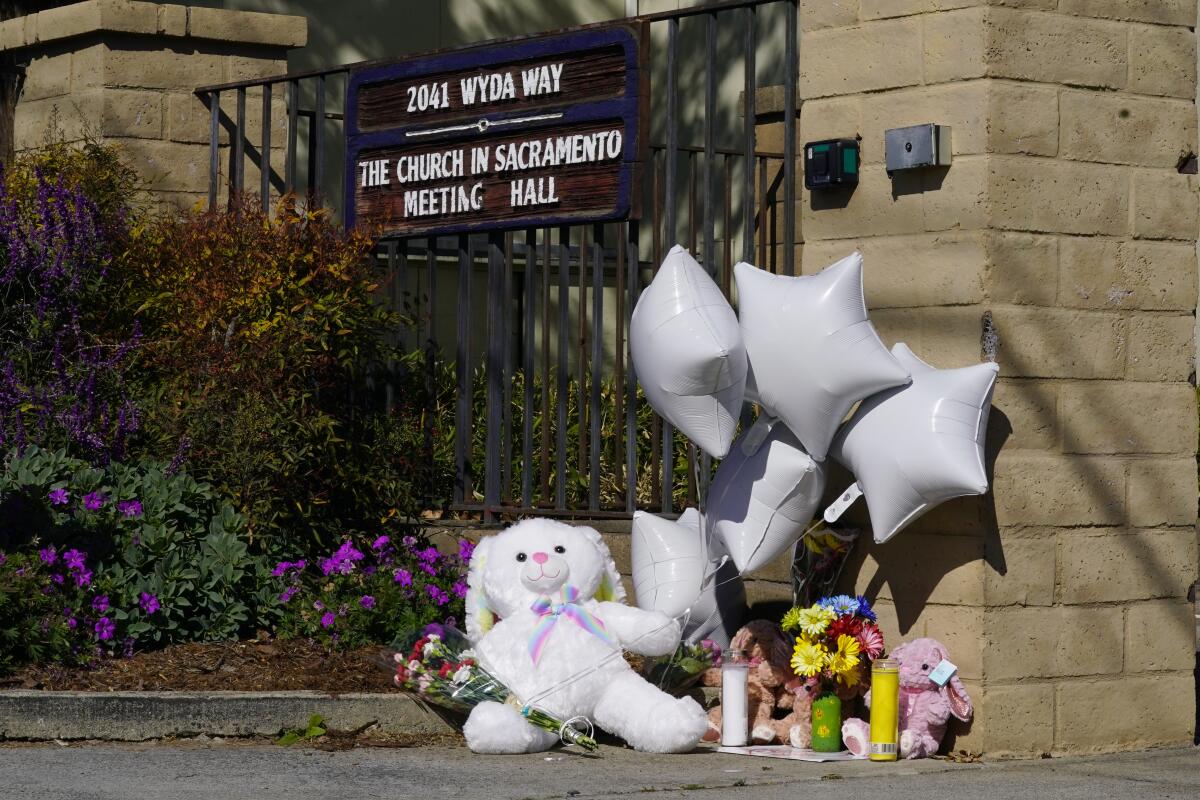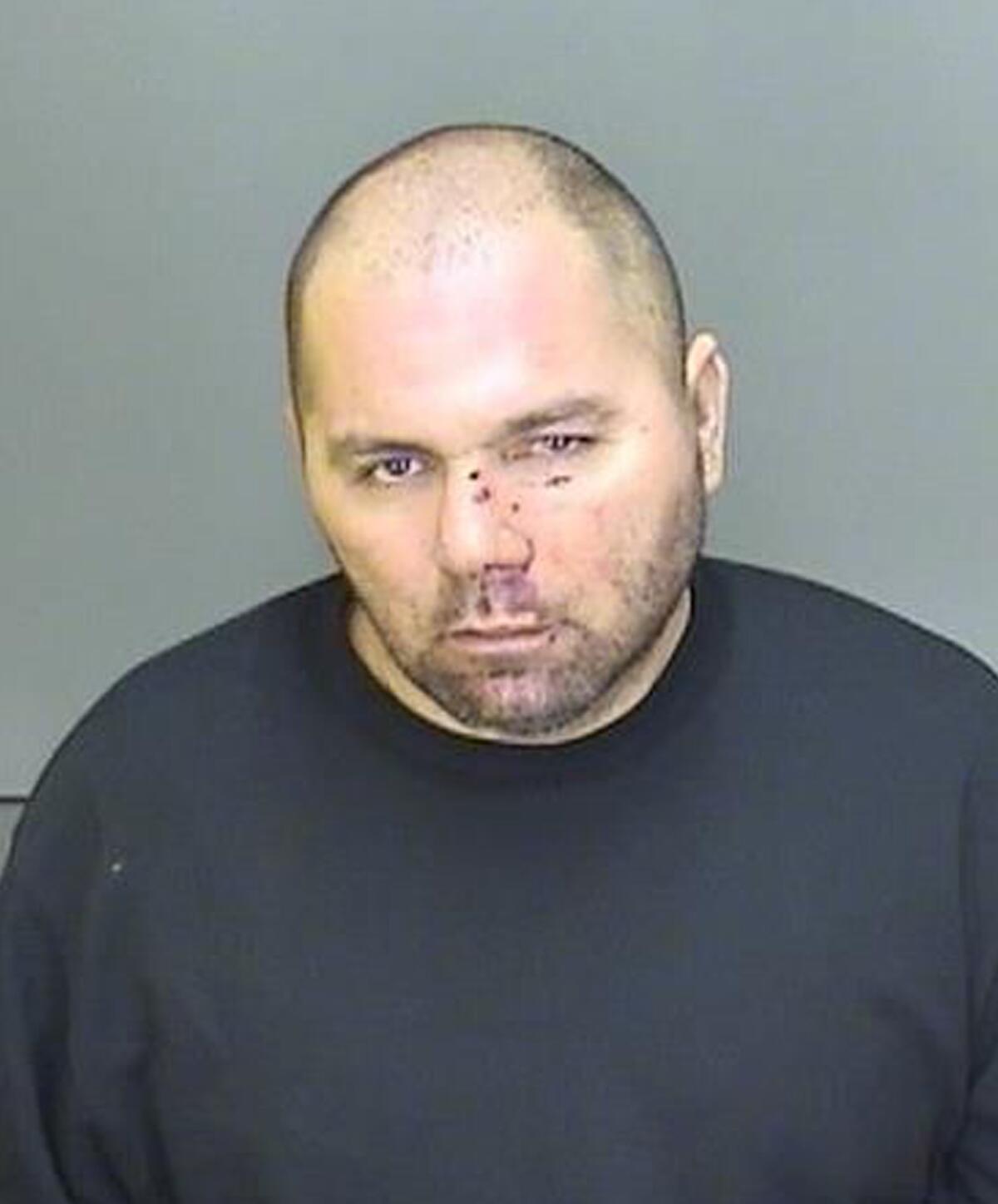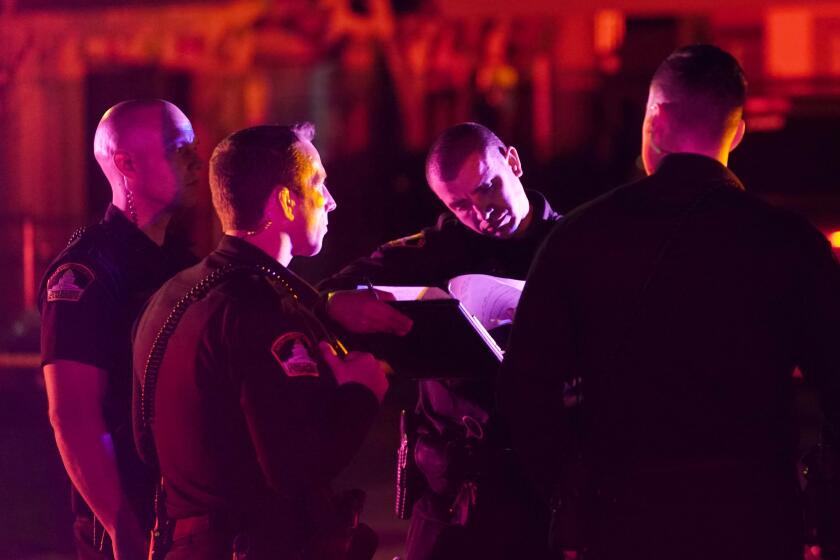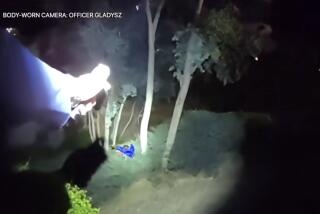How could an unstable father get a gun and kill his 3 kids?

- Share via
Five days after Northern California’s most wrenching spasm of domestic violence in years, questions abound about how an unstable father under a restraining order was able to obtain an AR-15-style rifle, walk into a Sacramento-area church and then kill his three daughters and a family friend designated to chaperone a visitation with them.
The deadly shooting occurred just a week after 39-year-old David Mora — who killed himself after the attack — assaulted a California Highway Patrol officer after driving drunk and crashing his car in a muddy Merced County field. After that altercation, he remained so combative that he was also booked for assaulting an emergency room technician at a Los Banos hospital.
Some 11 months earlier, Mora had been placed on a psychiatric hold by Sacramento County authorities after he became aggressive and threatened suicide.
All these circumstances should have been “red flags” against allowing Mora to keep seeing his daughters, say domestic violence experts and some state lawmakers. And if the current system isn’t equipped to flag and respond to such situations, the system needs to be changed, they say.
“The mother here did everything she could to protect her children,” said Faith Whitmore, chief executive of the Sacramento Regional Family Justice Center, which provides services to victims of domestic abuse.
The mother, Ileana Gutierrez Rios, had asked a Sacramento County court to include her children on the restraining order, but Mora objected, writing last May in court documents, “I do not agree to the protective order for my children.”
“I want a healthy relationship with my children, separate from Ileana,” he wrote in court documents.
The court sided with Mora, declining to put the three girls on the restraining order despite granting it to the mother. Instead, the court ordered weekly supervised visitations for Mora and his daughters.
As part of the order, Mora was required to attest he did not possess any guns, but as is normal, police were not directed to ensure his attestation was truthful.
“Restraining order gun restrictions are an honors system,” said Whitmore. “We rely on the perpetrator of violent acts to be truthful and not possess weapons. There is no follow-up, no check by law enforcement. That is something that needs to change.”
“A restraining order is only as good as it is enforced,” added State Sen. Susan Rubio (D-Baldwin Park), who last year co-authored legislation to tighten visitation requirements. “If an order is not enforced properly, it is just a piece of paper.
”I was especially shocked that this man was arrested in a violent confrontation that should have been a red flag about escalating behavior,” Rubio said. “And the mother of these children was never notified. The abuser was still allowed to see his children. Visitation should have been paused to allow the victim time to assess the dangers to her and her children. The legal system failed the mother and her three children. We need to find ways to close these gaps.”

The Sheriff’s Office has not revealed how Mora obtained the gun to carry out the killings. Domestic violence counselors who helped the mother obtain that restraining order say she was unaware of Mora possessing such firepower.
Sheriff’s officials say they are investigating how he came to possess a firearm. When asked about how Mora got the gun and his past contacts with deputies, Sgt. Rodney Grassmann, a department spokesman, replied: “I’m looking into all those things and once I have the material, I will disclose his prior history.” Grassmann noted the department is not confirming the type of gun used.
In recent days, The Times has asked the Sacramento County Sheriff’s Office multiple questions about what it knew about Mora, his weapon and domestic violence calls from the family’s home in Arden Arcade, which is in the county. As of Thursday afternoon, those questions have gone unanswered.
Woman told court her boyfriend was dangerous before he killed 4 during a supervised visit with their children at a Sacramento-area church.
Red flag restraining orders seeking to prevent gun ownership can stop someone from legally purchasing a gun. That was the case last October when a former UCLA lecturer with a history of threats against staff and students tried to buy a gun in Colorado. That former lecturer at the time lived near a college and was subsequently federally charged with making threats.
But nearly every type of restraining order — including the civil order in the Sacramento case, which is different from a red flag order — allows the court to ban the subject of the order from possessing firearms.
Yet some experts say there are limitations to what can be expected from any kind of restraining order.
“Sadly, if someone like this wants a gun, no restraining order is going to protect the victims ultimately,” said Ed Obayashi, a Northern California police system analyst, deputy and attorney. Obayashi said an easy supply of illegal weapons and so-called ghost guns made from parts means suspects can often obtain weapons in secrecy.
This was hardly the first time the Sacramento region has endured a horrific killing resulting from domestic violence. In the first nine months of 2017, 14 people died — eight of whom were children, according to authorities in Sacramento and other nearby counties. In one of those slayings, a 32-year-old man choked his wife until she fled to the street, then killed their children, ages 11, 9 and 7 months, inside their West Sacramento apartment.
To prevent such tragedies, some jurisdictions are assembling teams to identify family members most at risk, Whitmore said. In the church shooting case, records show Rios had accused Mora of previously attempting to strangle her. “Research shows that is one of the indicators of potential deadly violence,” Whitmore added.
Last April, Rios called the police from their Arden Arcade home after a heated argument in which Mora threatened suicide, according to court documents. Deputies detained him and doctors placed him on a 72-hour psychiatric hold that was later extended to a week, according to court records. In such cases, the hospital must find a bed in a psychiatric hospital for a more extended stay.
The April 2021 incident was the culmination of a decade of abuse by Mora that included choking Rios, pushing her and throwing things at her while repeatedly threatening to take her life, according to her filing in obtaining a five-year restraining order against him.
“He has not killed me because he would not know where to go with the children,” she wrote.
When responding to a so-called 5150 situation, the term referring to the legal code for a psychiatric hold, officers typically ask about the person’s access to firearms for the safety of those involved, said Obayashi. But beyond that immediate question, departments don’t generally follow up to see if the person, once released, has access to guns, he added.
Because no domestic violence arrest was made and the matter was not referred into the criminal justice system for prosecution, there was never an opportunity for a judge to order the surrender of any weapons, Obayashi said.
Law enforcement sources knowledgeable about Mora’s background say that, until the incident with the California Highway Patrol, he had never been booked by police.
On Friday, the Associated Press reported that Mora was in the U.S. illegally after overstaying his nonimmigrant visitor visa. A spokesperson for U.S. Immigration and Customs Enforcement told the AP that ICE asked to be notified when he was released from jail after the CHP incident, but the Merced County Sheriff’s Office said it did not do so because of California’s so-called sanctuary state law limiting local law enforcement’s cooperation with federal authorities.
Whitmore said the mother had sole legal and physical custody of the children. The meeting at the Church in Sacramento, a nondenominational Christian place of worship, was the only way he could see his daughters, ages 13, 10 and 9.
“Kids need to be given more consideration in these cases,” Whitmore said. “Their views and well-being need to be given real consideration.”
In this situation, Mora was ordered to complete 16 anger management classes, but there was not even a requirement he complete those before he saw his children, Whitmore added. “That is something that needs to change,” she said.
Julie Bornhoeft, chief strategy and sustainability officer for WEAVE Inc., a crisis intervention service in Sacramento, said courts rarely cut off complete access to children. “The court sees children as needing both parents. But that makes a lot of assumptions about how a parent is behaving at a given time.”
Mora’s recent arrest could have been used to prevent his court-ordered supervised visitation with his daughters. But to do so, Rios would have had to gain knowledge of the arrest, and then ask a judge or court commissioner to modify the visitation order on an emergency basis. Neither happened.
In addition, since Mora had never been convicted or charged with domestic violence, there was no way a criminal court could have had control over him, even after his arrests in Merced County.
If you or someone you know needs help, you can call the National Domestic Violence Hotline at 1-800-799-7233, chat live with an advocate at thehotline.org or text “START” to 88788.
More to Read
Sign up for Essential California
The most important California stories and recommendations in your inbox every morning.
You may occasionally receive promotional content from the Los Angeles Times.












